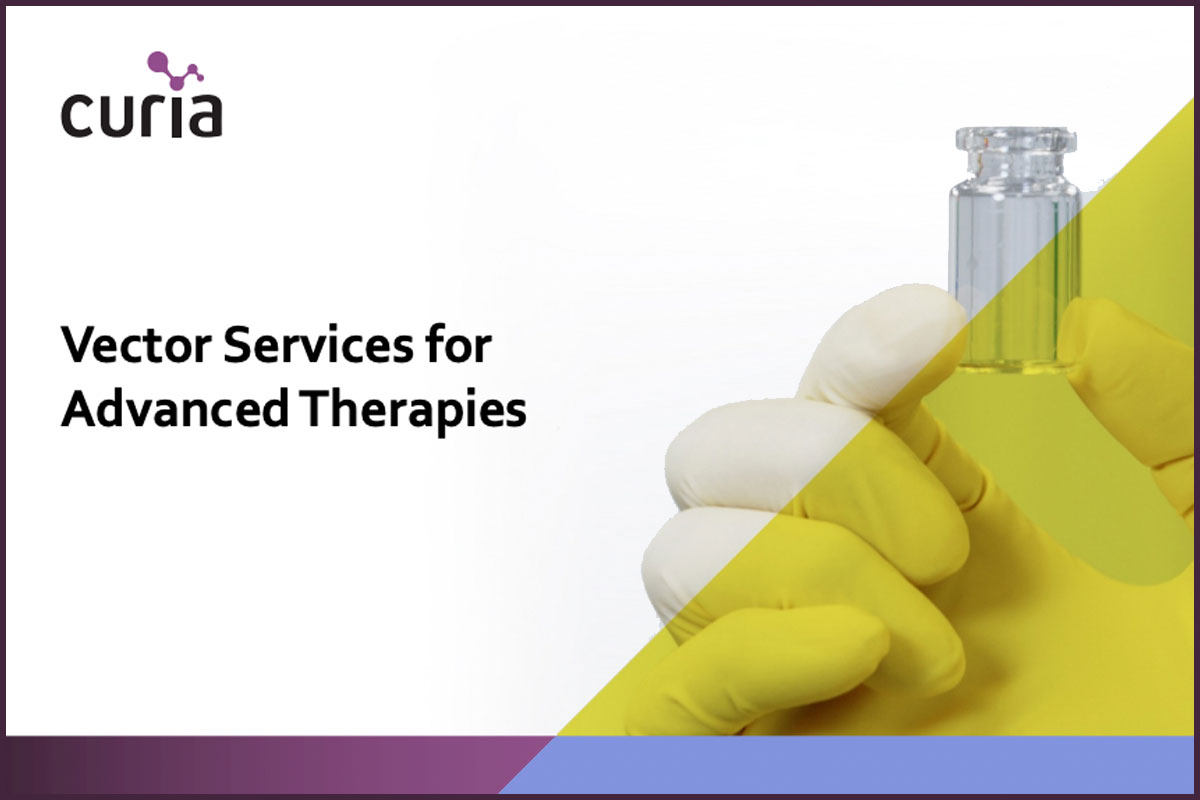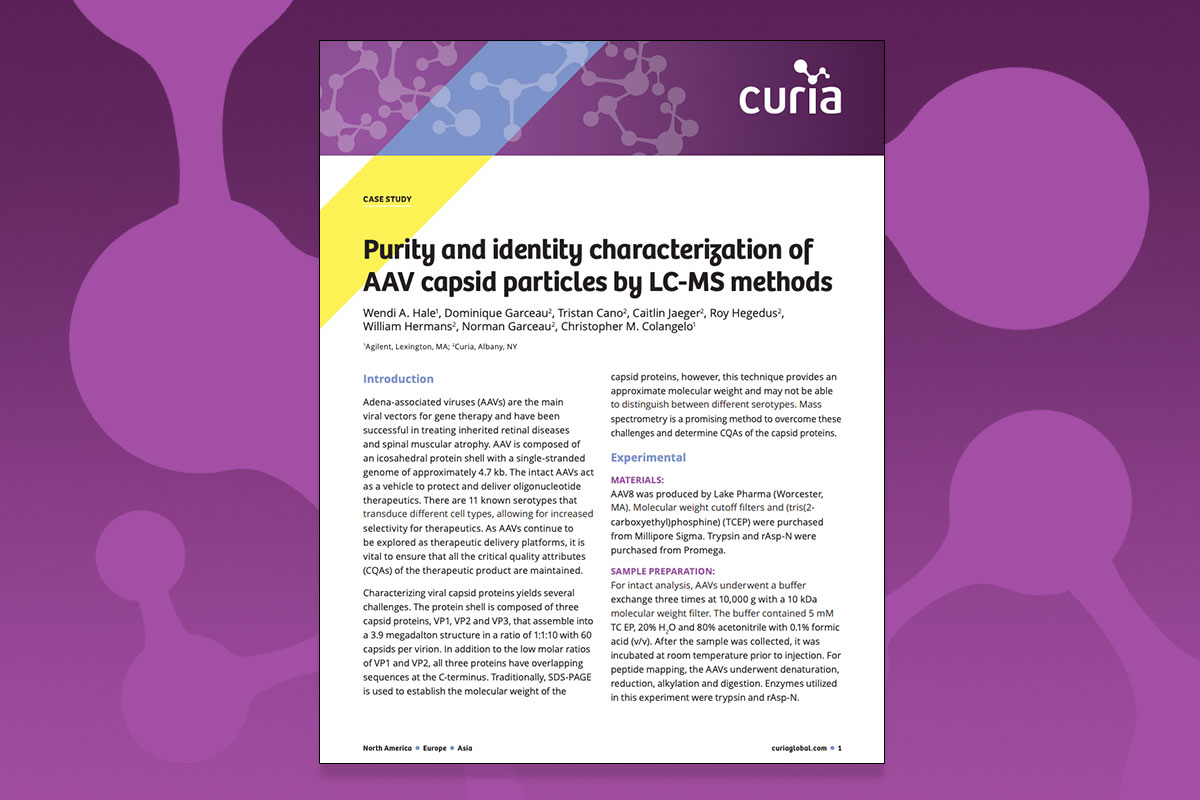Viral Vector Characterization
Viral vectors for gene and cell therapy are characterized utilizing an extensive panel of analytical assays, several of which are offered by Curia. Some of the assays are standard offerings, while others require custom development. In addition, Curia’s Analytical Development team can perform qualification of assays for QC testing of cGxP products. A list of some representative assays is shown below.
- Genome Copy Number (ddPCR or qPCR)
- Aggregation/Monodispersion (DLS)
- Capsid Titer (ELISA)
- Infectious Titer TCID50 (ddPCR and flow cytometry)
- Purity (PAGE or CE)
Key Features of Cell Line Characterization
- Cell surface protein expression: Flow cytometry
- Intracellular or secreted protein expression: PAGE, western blot, microscopy
- RNA expression: qPCR or ddPCR
- Gene copy number: qPCR or ddPCR
- Functional analysis
- Reporter assays
- Cell line stability

